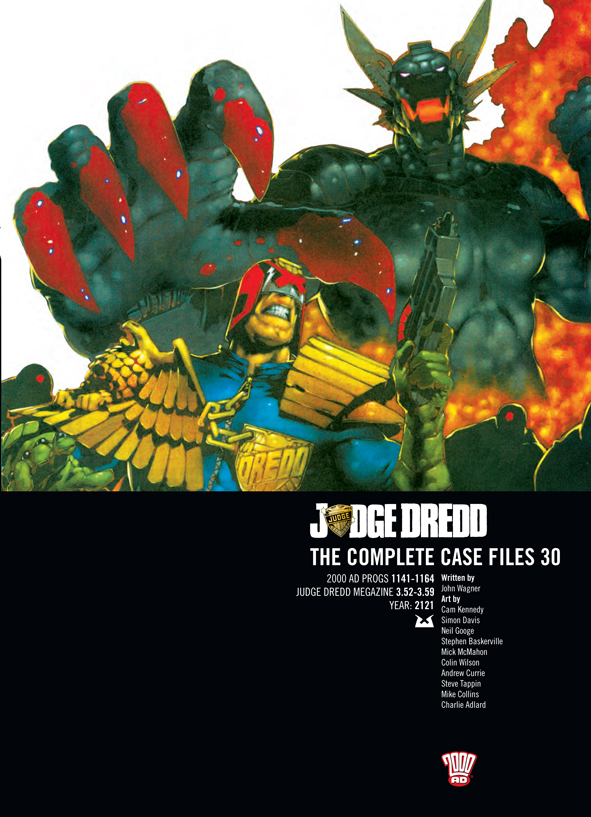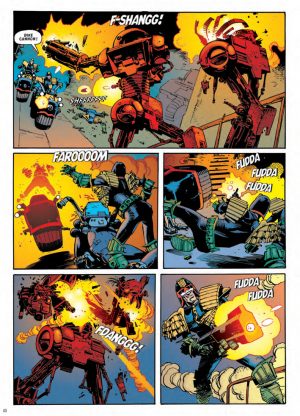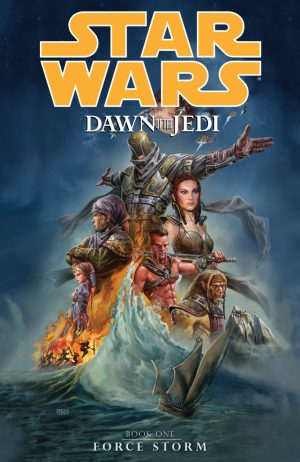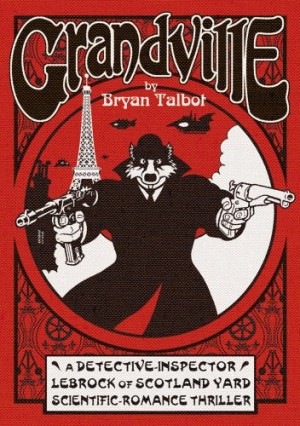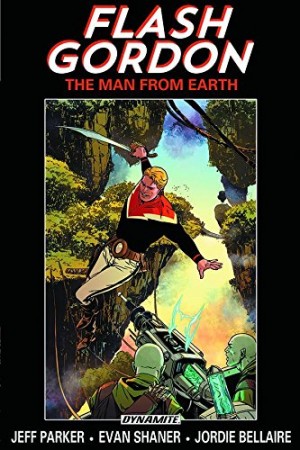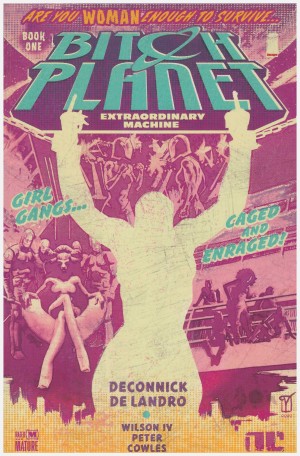Review by Roy Boyd
John Wagner is yet again responsible for writing this whole collection. Unlike Case Files 29, which was almost all short stories, this volume is instead packed with one long tale – ‘Doomsday’ – spread over a handful of stories. In fact, it effectively tells the same story twice, but from two different viewpoints.
We kick off in the very capable hands of artist Cam Kennedy (sample page) for the seven-part ‘Return of the Assassin’. The assassin in question is Orlok (not “Orlock”, as the back cover blurb claims), Dredd’s bitter enemy from the days of ‘Block Mania.’ ‘The Trial’, with slick if slightly deranged looking art by Simon Davis, moves the action to the Mediterranean Free State, home to the nationless leaders of East-Meg. Dredd nuked East-Meg One at the end of the Apocalypse War, killing half a billion people in the process. Needless to say, some of the survivors hold a bit of a grudge about this, and they intend to execute their most hated enemy, after a fair trial of course.
‘Trial of Strength’ has underwhelming art by Neil Googe and Stephen Baskerville that would look more at home in an American comic. It’s pointless and thankfully short, with yet another testosterone-fuelled punch-up between Dredd and Orlok, but, just as ‘Block Mania’ led into ‘The Apocalypse War,’ it once again transpires that Orlok’s antics are merely the appetiser for the story to follow.
Sticking with the food analogy, the much meatier ‘War Games’ is a seven parts with art by seven different artists. Dredd stories, and comics in general, usually benefit from having the same artist on a story. However, most of the many cooks involved in this broth are so talented that it doesn’t really matter. Mike McMahon and Colin Wilson in particular, a couple of favourites of many older fans, both do great work here.
‘Endgame’, the five chapter story that concludes the 2000 AD section of the book, has art by Charlie Adlard. While early in his career he didn’t always draw the slickest people, here he compensates with great layouts and choreographed action. The colouring also contributes enormously to a story that has all the widescreen action of a blockbuster movie.
‘Doomsday’ was the first time 2000 AD and the Judge Dredd Megazine ran stories concurrently. After having seen all that Dredd and his city has had to endure, the Megazine section depicts the same events from the point of view of ex-Judge Galen DeMarco. Fortunately the pair of four part stories comprising this section have much to recommend them even if we know what’s going to happen. ‘The Narcos Connection’ has really impressive artwork by Peter Doherty, whose style has developed to such an extent that one is reminded of the work of such talented artists as Dave (The Rocketeer) Stevens and Berni Wrightson. The final story, ‘Doomsday’ has artwork by Mike Collins and Colin Wilson. Collins is pretty good, but Wilson’s work is superb, with truly impressive cityscapes and action sequences. Wilson inherited Blueberry from Moebius, and it’s easy to see why he landed such a prestigious gig.
Although the structure might have been improved by running these stories side-by-side, this is one of the more satisfying and well-executed Dredd epics, with lashings of old-school art by past masters like Wilson, Kennedy and McMahon. We’ve seen Dredd and a ragtag bunch of survivors go up against overwhelming odds before, but ‘Doomsday’ has enough originality that it doesn’t feel like a re-tread of previous stories. It was previously available as two 1990s collections titled Doomsday for Dredd and Doomsday for Mega-City One.
